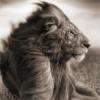Списание Life, декември, 1941
-
Последна активност
-
- 803 мнения
- 20398 прегледa
-
- 3 мнения
- 201 прегледa
-
- 2711 мнения
- 246158 прегледa
-
Смятам, че ще ви бъдат интересни тези новости от света на математиката.
От ico1, in Интересно за математиката
- 16 мнения
- 248 прегледa
-
- 3162 мнения
- 260613 прегледa
-
-
Последно разглеждащи 0 Потребители
- No registered users viewing this page.



Препръчано мнение
Напиши мнение
Може да публикувате сега и да се регистрирате по-късно. Ако вече имате акаунт, влезте от ТУК , за да публикувате.